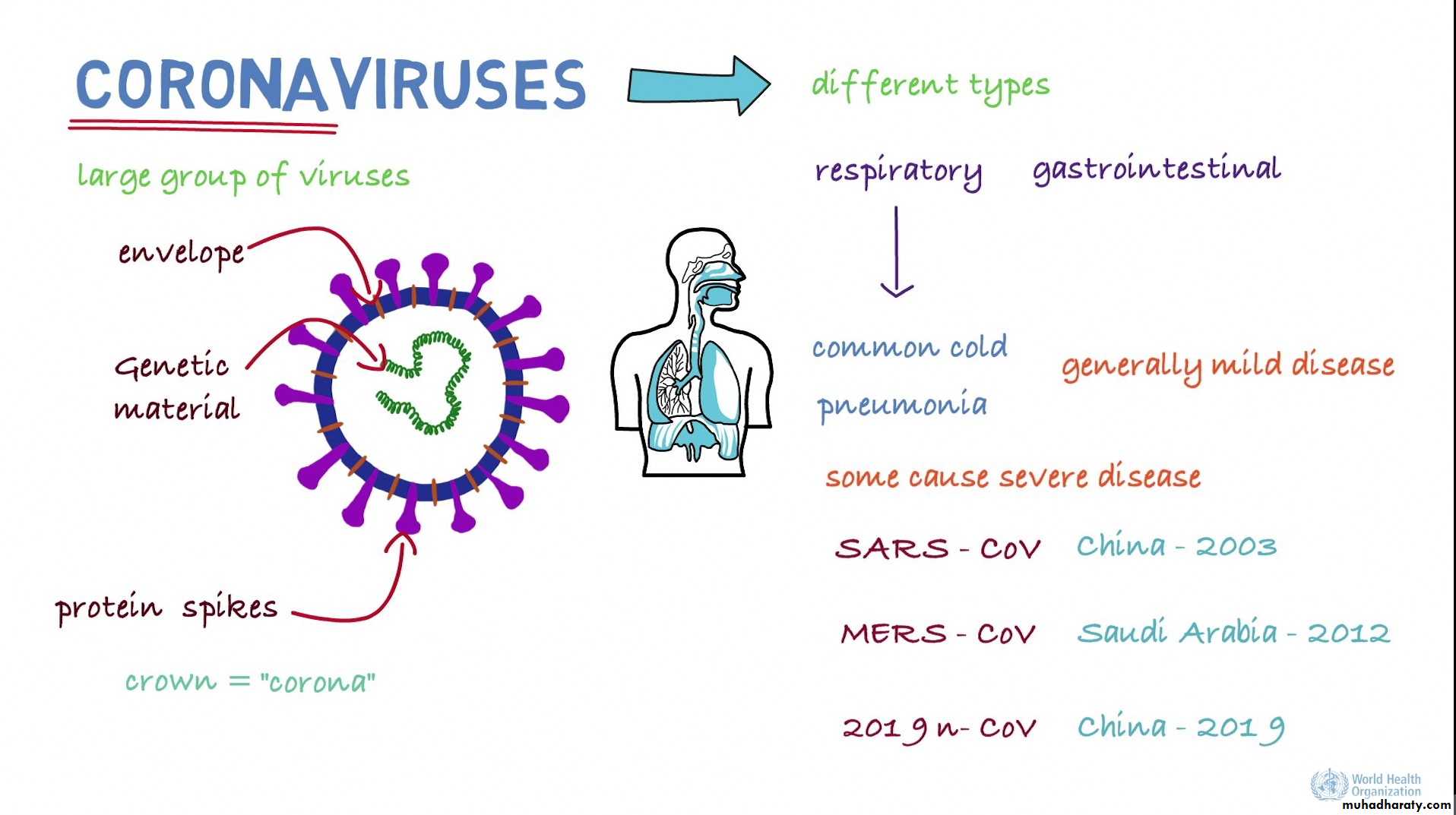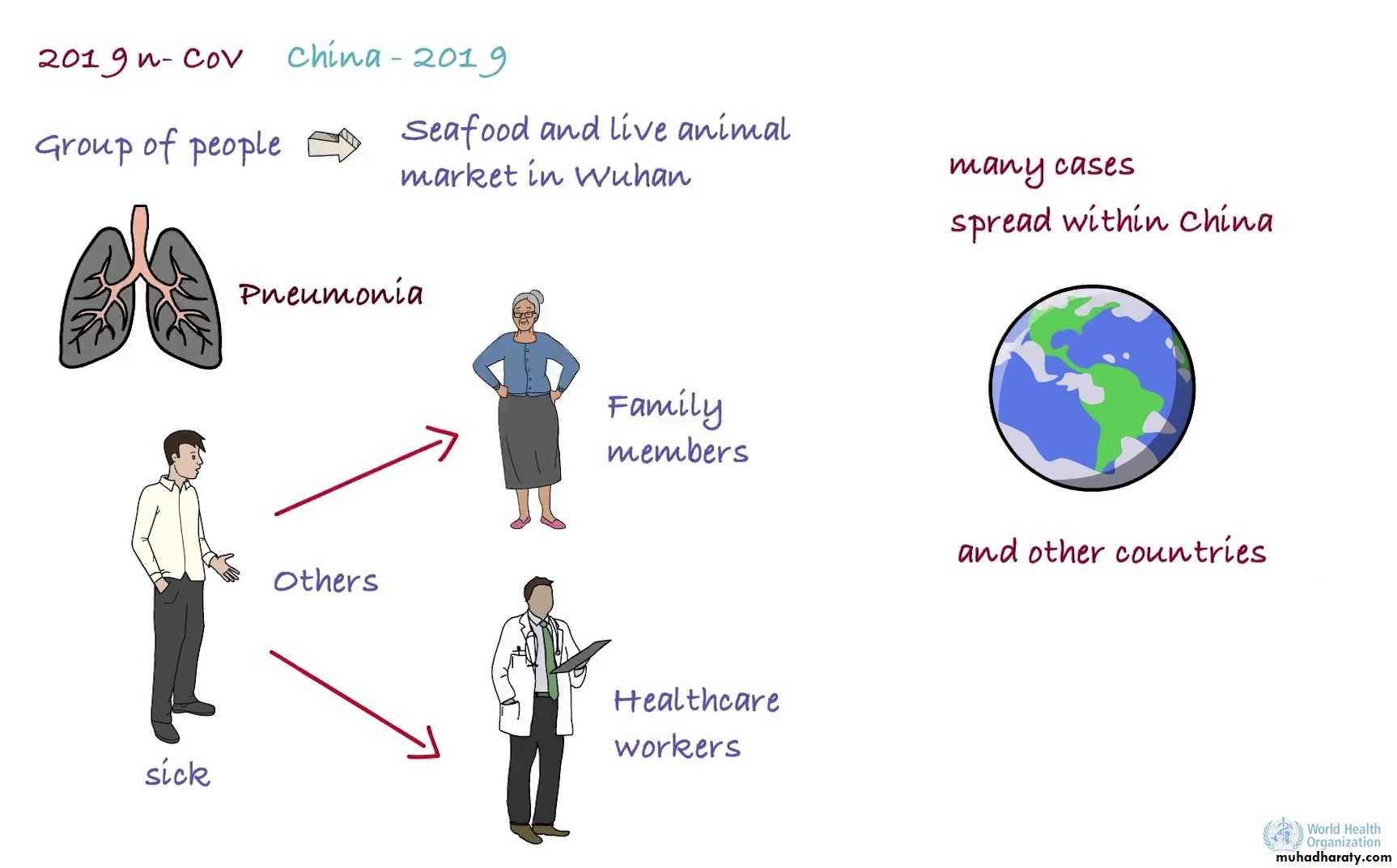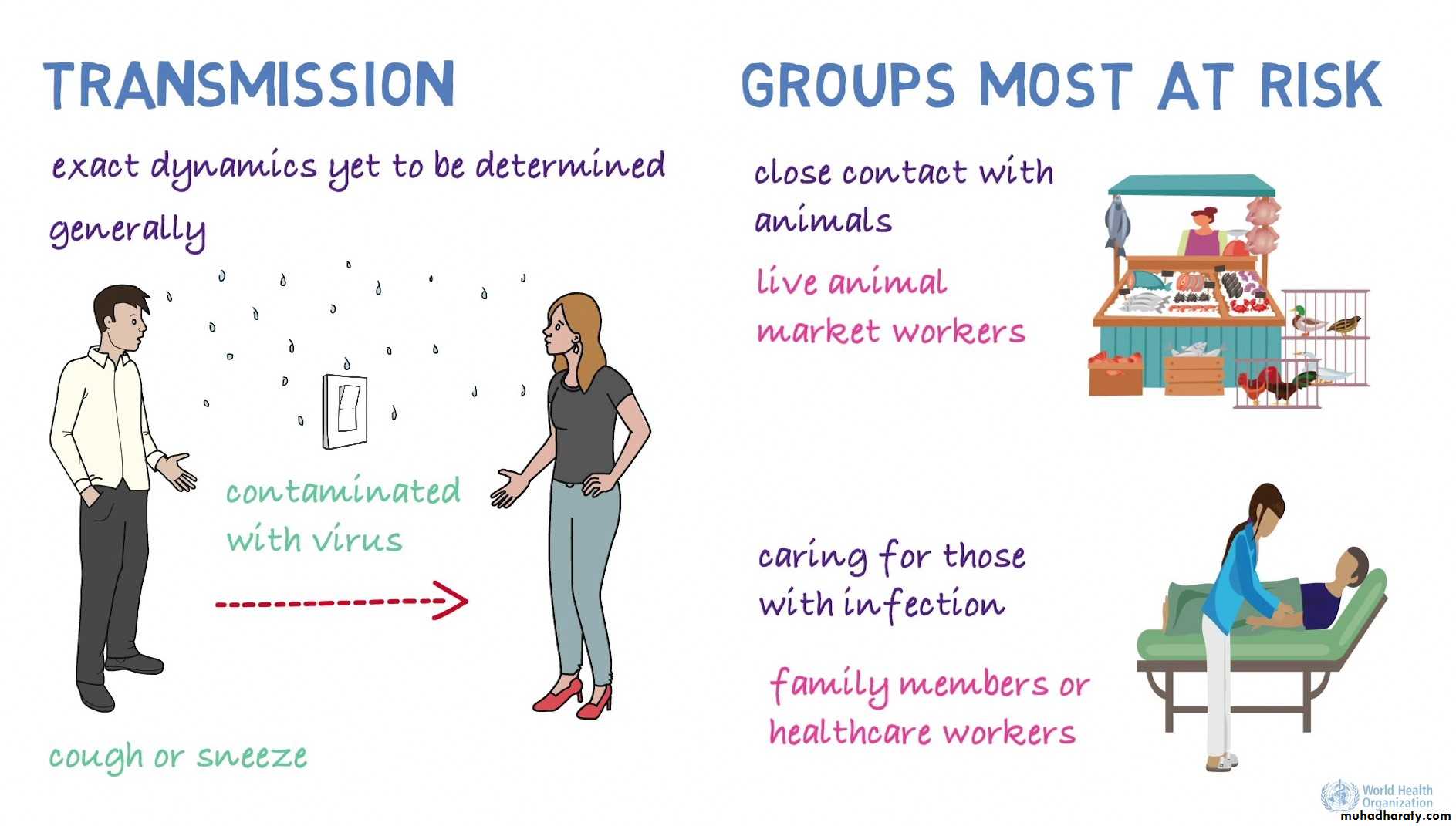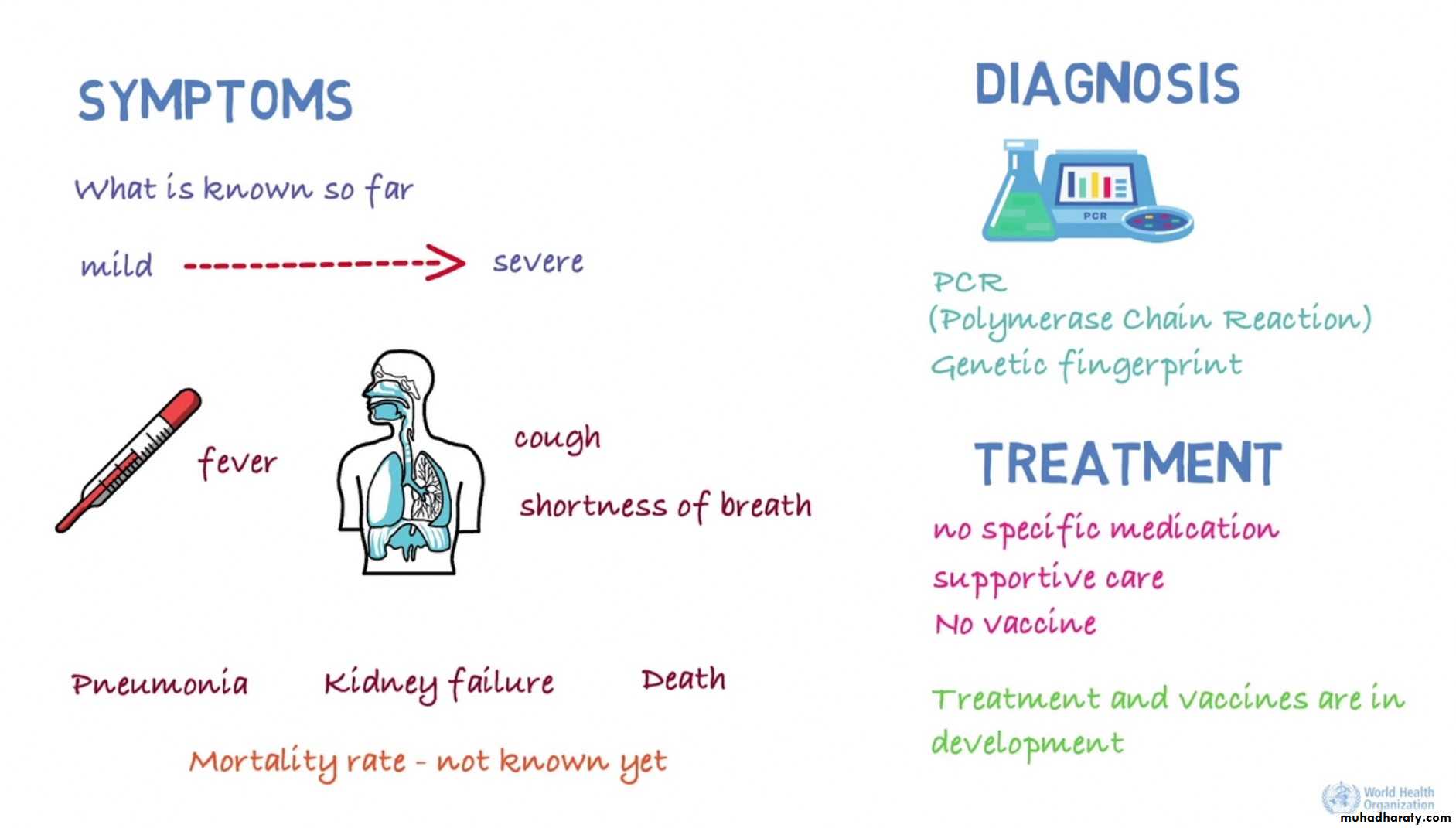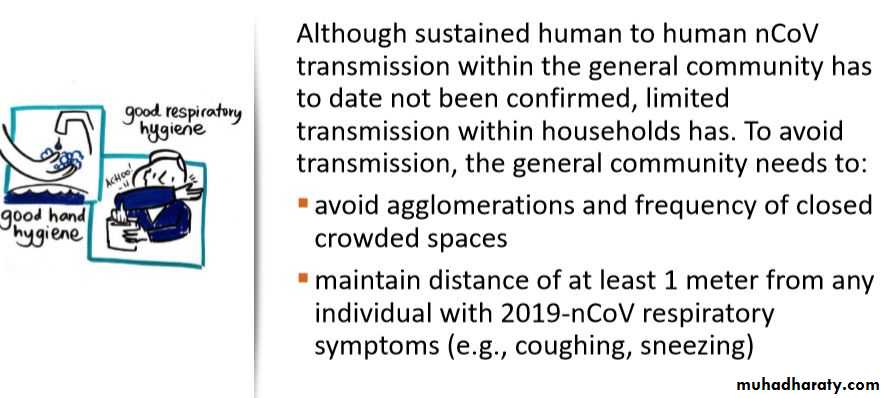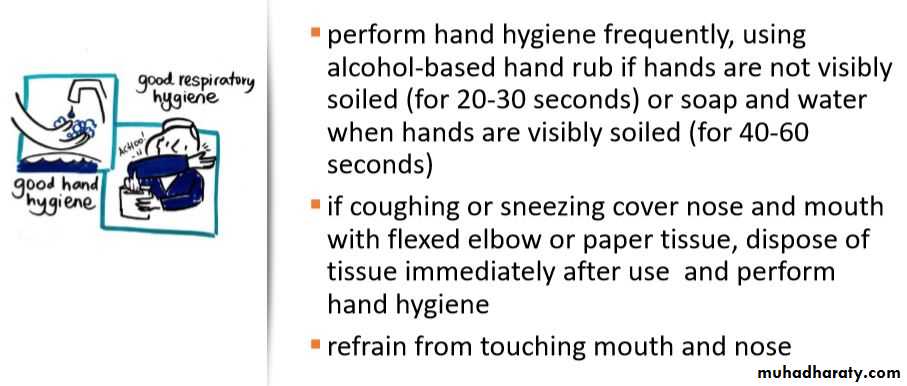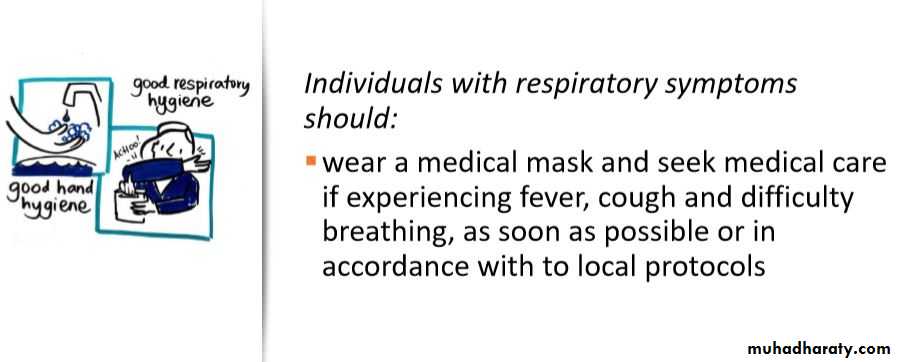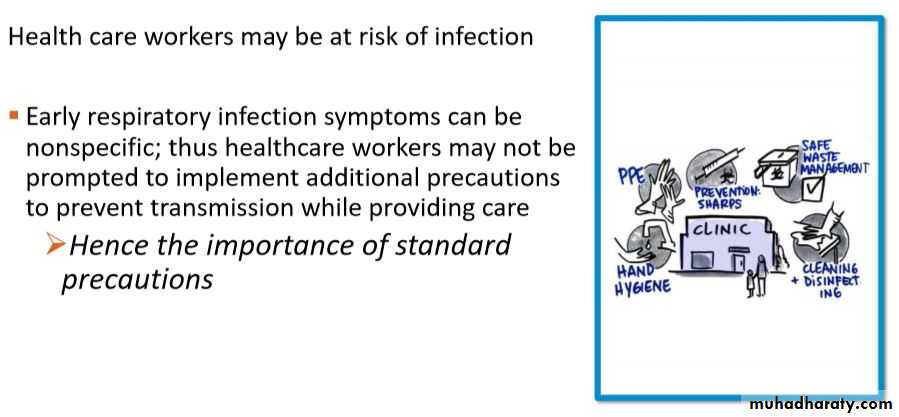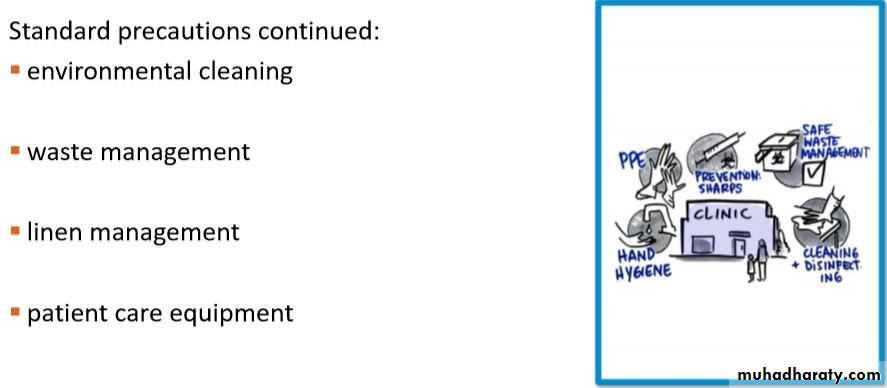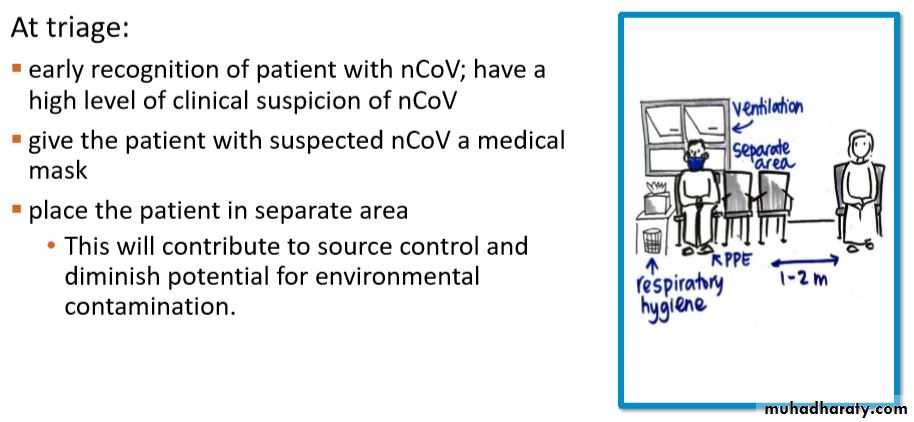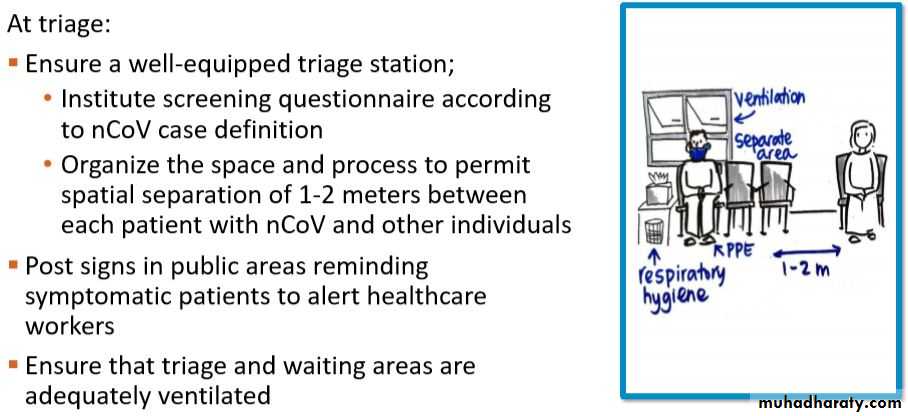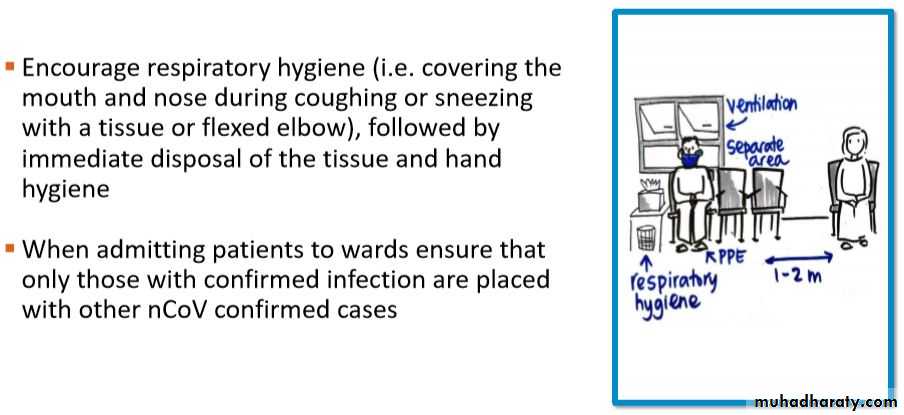Control of communicable diseasesRespiratory diseasesStage 4-L6
2019, novel Corona virusBy Dr. Muslim N. Saeed \ FAMCO dept.
February 24th, 2020
2019, novel Coronavirus
In December 2019, there was cluster of pneumonia cases in China. Investigations found that it was caused by a previously unknown virus – now named the 2019, novel coronavirus.Coronaviruses are a large group of viruses. They consist of a core of genetic material surrounded by an envelope with protein spikes. This gives it the appearance of a crown. Crown in Latin is called Corona. There are different types of coronaviruses that cause respiratory and sometimes gastrointestinal symptoms. Respiratory disease can range from the common cold to pneumonia and in most people, the symptoms tend to be mild. However, there are some types of coronaviruses that can cause severe disease. These include the Severe Acute Respiratory Syndrome Coronavirus, first identified in China in 2003 and the Middle East Respiratory Syndrome Coronavirus, that was first identified in Saudi Arabia in 2012. The 2019 novel coronavirus was first identified in China.
It initially occurred in a group of people with pneumonia who had been associated with a seafood and live animal market, in the city of Wuhan. The disease has since spread from those who were sick to others including family members and health care staff. There are many cases at present, and the disease has spread within China and also to a number of other countries.
So, where did the virus come from? It is known that coronaviruses circulate in a range of animals. Sometimes, these viruses can make the jump from animals to humans. This is called a “spillover” and could be due to a range of factors such as mutations in the virus or increased contact between humans and animals. For example, MERS CoV is known to be transmitted from camels and SARS CoV from civet cats. The animal reservoir of the 2019 novel coronavirus is not yet known.
How is it transmitted? The exact dynamics of how the virus is transmitted is yet to be determined. In general, respiratory viruses are usually transmitted through droplets created when an infected person coughs or sneezes or, through something that has been contaminated with the virus. People most at risk of infection from the novel coronavirus are those in close contact with animals such as live animal market workers and those who are caring for people infected with the virus such as family members or healthcare workers.
So how does the disease present? there can be a number of symptoms ranging from mild to severe. There can be fever and respiratory symptoms such as cough and shortness of breath. In more severe cases, there has been pneumonia, kidney failure and death. The mortality rate is not known yet. How can we tell whether someone is infected? The infection can be diagnosed by a test called PCR, or Polymerase Chain Reaction. This test identifies the virus based on its genetic fingerprint. There is currently no specific medication for this virus and treatment is supportive care. There is currently no vaccine to protect against this virus. Treatment and vaccines are in development.
How do we prevent transmission of the virus?
This new virus currently has a limited geographic spread. However, there are a number of standard hygiene practices that have been recommended to protect against infection and further spread. These include:• Covering your mouth and nose when coughing or sneezing with a medical mask, tissue or flexed elbow.
• Avoiding close contact with those who are unwell.
• the appropriate use of masks and Personal Protective Equipment (PPE) – especially in a health care setting.
• Washing hands regularly with soap and water or alcohol-based hand rub.
• It is important to stay home if you are feeling unwell, but if you have a fever, cough and difficulty breathing, seek medical care early and share your previous travel history with your health care provider.
• Actions that can be taken to prevent infection from an animal source include:
• Avoiding unnecessary unprotected contact with animals.
• washing hands after contact with animals or animal products.
• ensuring that animals products are cooked thoroughly before they are consumed.
Infection Prevention Control(IPC) for the general community
IPC measures to prevent transmission in health care settings
That’s a quick look at this emerging infectious disease. Given that this outbreak is evolving rapidly, what is known about this virus can change.
End

